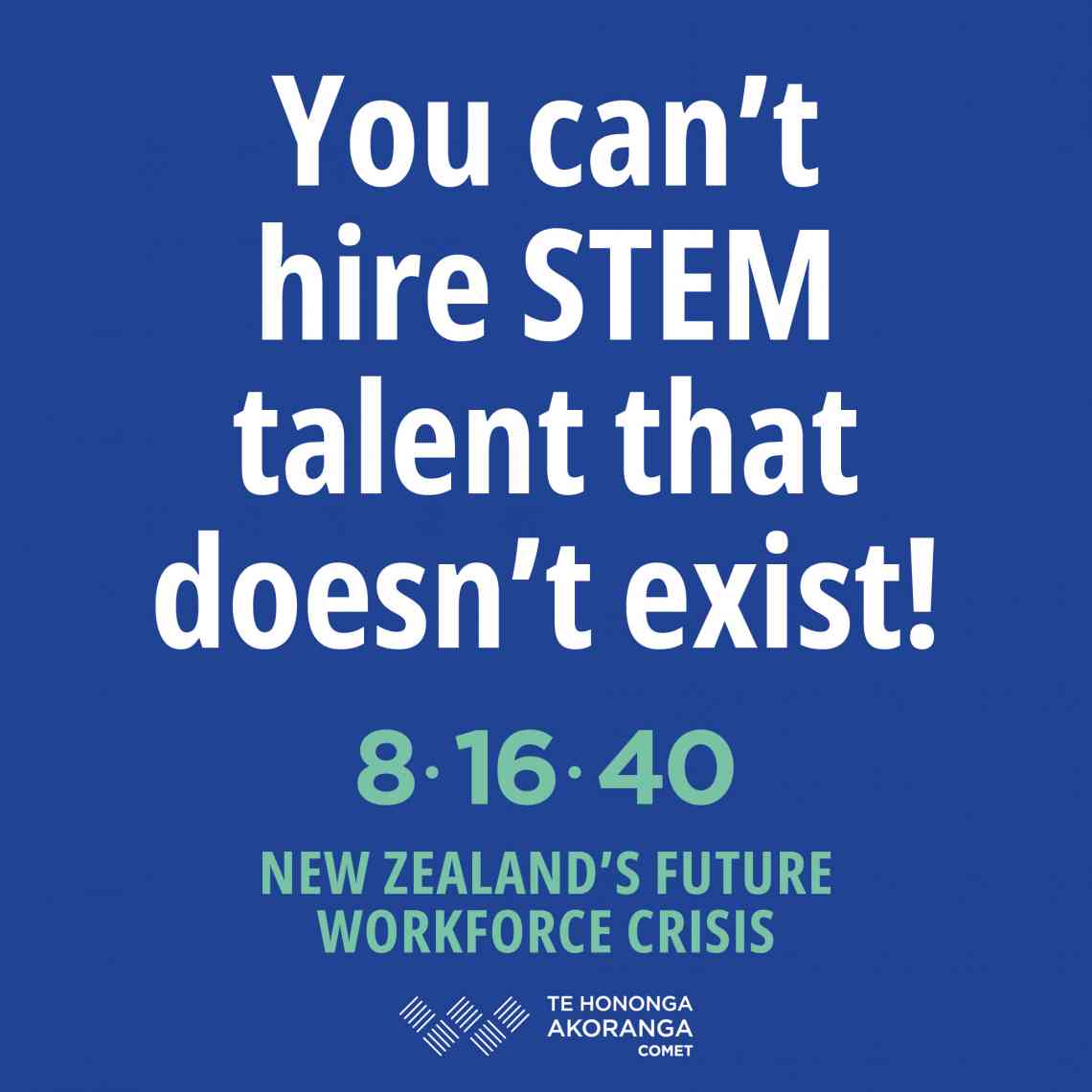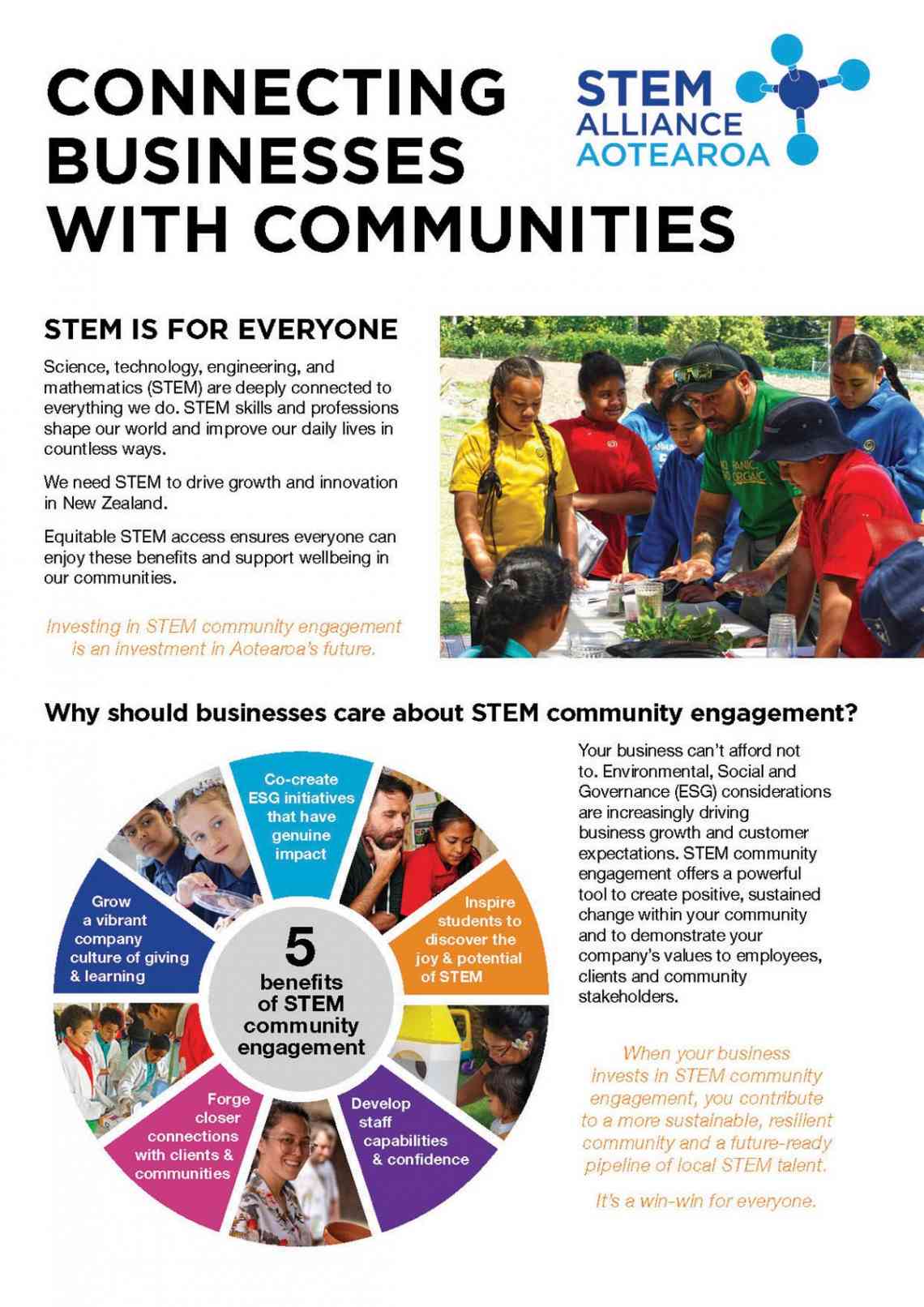Katheren Leitner
Chief Executive — Te Hononga Akoranga COMET
Aotearoa New Zealand’s businesses face a stark reality: you can’t hire STEM talent that doesn’t exist. The skills shortage isn’t a distant problem — it’s disrupting industries now, and demographic shifts over the next 16 years will only deepen the crisis.
The state of New Zealand's STEM workforce #
The skills gap already hampers critical sectors:

- IT and technology: NZTech reports 4,000–5,000 new tech roles annually,
yet fewer than 2,000 graduates enter the field each year. - Engineering: 90% of firms struggle to recruit, especially in civil and structural engineering (Engineering NZ).
- Healthcare tech: Medical technology roles now take 6–9 months to fill, nearly double the wait from five years ago (NZ Health IT Cluster).
- Construction: The industry needs 50,000 additional workers over the next five years, particularly in sustainable building and digital construction (Construction Industry Council).
Unfilled STEM positions cost New Zealand an estimated $640 million annually in lost productivity.
Why NZ businesses can't wait
For too long, companies have relied on universities and overseas recruitment to meet STEM needs. That strategy is failing due to:
1. Global talent competition
- Higher wages abroad: Australian tech salaries average 20–30% more than New Zealand’s.
- Tighter immigration policies: Post-pandemic restrictions limit foreign hiring.
- Remote work: Local talent is being recruited by international firms without leaving the country.
2. Industry’s fast-changing needs
- Education lag: 78% of tech leaders say university curricula trail industry needs by 2–3 years (Microsoft NZ, 2023).
- Training gaps: 64% of STEM employers must extensively train new graduates.
- Emerging fields: AI, quantum computing and biotech require specialised skills not widely taught in New Zealand.
3. The 8•16•40 Crisis
- By 2041, 40% of our under-40 workforce will be Māori and Pasifika.
- Currently, these communities make up only 8% of STEM tertiary students.
- Without urgent action, the talent gap will widen, exacerbating workforce shortages.
The business case for STEM investment
Investing in STEM talent isn’t charity; it delivers measurable benefits:
- Lower hiring costs: Replacing a technical employee costs 100–150% of their salary (Deloitte NZ).
- Higher innovation: Diverse technical teams are 35% more likely to outperform competitors.
- Increased productivity: Internal development programmes boost productivity by 24%.
- Stronger retention: Employees in STEM learning pathways are 34% more likely to stay.
Leading New Zealand businesses taking action
Xero’s school coding initiative
Xero partners with primary schools to teach coding, reaching 15,000+ students since 2018, with 45% Māori and Pasifika participation.
"Waiting until university is too late," says Anna Curzon, Chief Product Officer. "We need to spark interest early."
Fisher & Paykel Healthcare’s apprenticeships
This programme trains advanced manufacturing specialists, growing Māori and Pasifika representation to 32% of apprentices — double their company-wide proportion.
Fonterra’s rural STEM initiative
Fonterra equips rural schools with STEM resources, connecting agriculture with technology.
"Farming is high-tech, but students weren’t seeing it," says CEO Miles Hurrell. "We’re changing that perception."
How COMET can help you engage: #
- Assess future needs: What STEM skills will your business need in 3–5 years?
- Align business outcomes: Align business priorities with community engagement opportunities?
- Find partners: Connect with schools and community groups that align with engagement outcomes.
- Pilot initiatives: Start small and scale successful programmes.
- Measure and report outcomes: Track social, educational and talent development outcomes.
For more information, consult the STEM Alliance "Connecting Businesses with Communities" brochure at right.
New Zealand can’t afford to wait. Businesses must lead the charge in building the talent pipeline.
- What is your company doing to develop STEM talent?
- What challenges have you faced?
- What strategies have worked?
Next week: STEM education is an economic investment, not a cost
